
El Gancho: The Vibrant Heart of Zaragoza
Explore El Gancho in Zaragoza, where historic charm meets contemporary flair, and every street tells a story through art, culture, and vibrant local life.
El Gancho, nestled in the historic core of Zaragoza, is a vibrant and eclectic neighborhood that offers a unique blend of old-world charm and contemporary flair. Known for its narrow, winding streets and colorful buildings, this area is a treasure trove of cultural and historical gems. As you stroll through El Gancho, you will encounter a variety of local boutiques, tapas bars, and traditional markets, each offering a glimpse into the daily life and rich heritage of Zaragoza. One of the most striking features of El Gancho is its artistic spirit. The neighborhood is adorned with stunning street art and murals, turning every corner into a visual feast. Art lovers will find themselves enchanted by the numerous galleries and creative spaces that showcase works by local artists. The artistic vibe is further enhanced by the lively music and dance performances that often take place in the neighborhood's squares and public spaces. El Gancho is also home to several historical landmarks and cultural institutions. The Church of San Pablo, a beautiful example of Mudéjar architecture, stands as a testament to the neighborhood's rich history. Nearby, the Centro de Historias is a cultural center hosting a variety of exhibitions and events that delve into Zaragoza's past and present. With its lively atmosphere, rich cultural offerings, and historic charm, El Gancho is a must-visit destination for any traveler to Zaragoza.
Local tips in El Gancho
- Visit early in the morning or late afternoon to avoid the midday heat and enjoy a more relaxed atmosphere.
- Wear comfortable shoes as the cobblestone streets can be uneven and require some walking.
- Take your time to explore the street art and murals; they are a significant part of El Gancho's charm.
- Try local tapas at one of the neighborhood's traditional bars for an authentic taste of Zaragoza.
- Check the schedule at the Centro de Historias for any special exhibitions or events during your visit.
El Gancho: The Vibrant Heart of Zaragoza
El Gancho, nestled in the historic core of Zaragoza, is a vibrant and eclectic neighborhood that offers a unique blend of old-world charm and contemporary flair. Known for its narrow, winding streets and colorful buildings, this area is a treasure trove of cultural and historical gems. As you stroll through El Gancho, you will encounter a variety of local boutiques, tapas bars, and traditional markets, each offering a glimpse into the daily life and rich heritage of Zaragoza. One of the most striking features of El Gancho is its artistic spirit. The neighborhood is adorned with stunning street art and murals, turning every corner into a visual feast. Art lovers will find themselves enchanted by the numerous galleries and creative spaces that showcase works by local artists. The artistic vibe is further enhanced by the lively music and dance performances that often take place in the neighborhood's squares and public spaces. El Gancho is also home to several historical landmarks and cultural institutions. The Church of San Pablo, a beautiful example of Mudéjar architecture, stands as a testament to the neighborhood's rich history. Nearby, the Centro de Historias is a cultural center hosting a variety of exhibitions and events that delve into Zaragoza's past and present. With its lively atmosphere, rich cultural offerings, and historic charm, El Gancho is a must-visit destination for any traveler to Zaragoza.
Iconic landmarks you can’t miss
Aljafería Palace
Discover the breathtaking Aljafería Palace, a Moorish masterpiece in Zaragoza, blending history, culture, and stunning architecture for an unforgettable experience.

Parque Grande José Antonio Labordeta
Explore the lush beauty and cultural richness of Zaragoza's Parque Grande José Antonio Labordeta, a perfect escape for nature lovers and urban explorers alike.
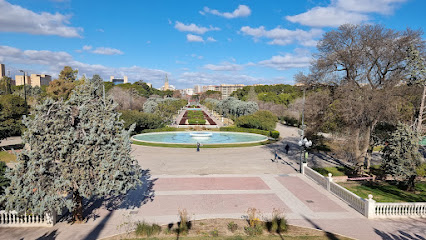
Puerta del Carmen
Experience the historical charm of Puerta del Carmen, Zaragoza's iconic gateway that opens up to a world of culture and architectural beauty.
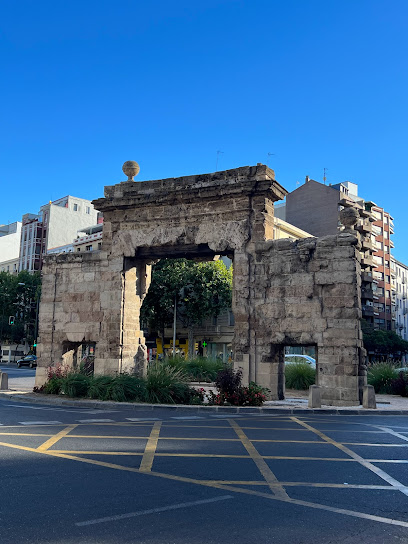
Cathedral of the Savior of Zaragoza
Explore the architectural splendor of the Cathedral of the Savior in Zaragoza, a stunning blend of Gothic, Mudéjar, and Baroque styles that enchants every visitor.
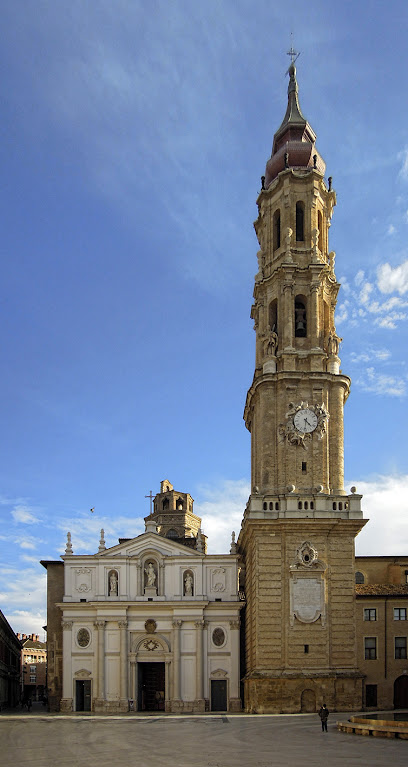
Plaza San Felipe
Discover the historic Plaza San Felipe in Zaragoza, a vibrant square filled with stunning architecture, churches, and cultural attractions.
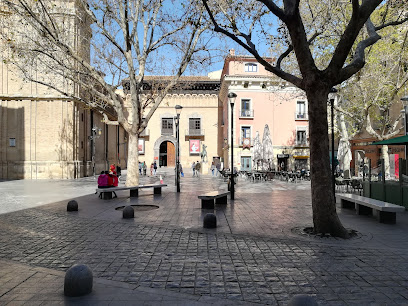
Basílica of Santa Engracia Church
Explore the Basílica of Santa Engracia, a stunning Baroque masterpiece in Zaragoza, rich in history and architectural beauty.
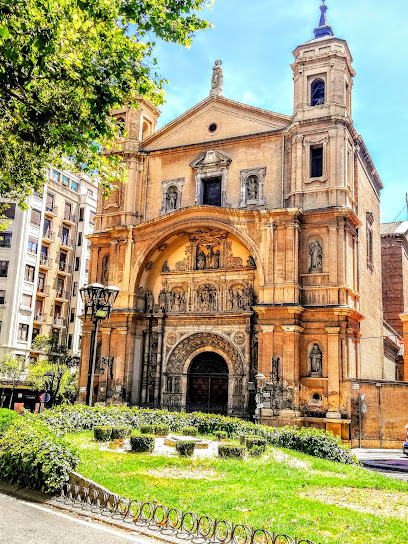
Palacio de Sástago
Discover the architectural beauty and historical significance of Palacio de Sástago in Zaragoza's charming Old Town.
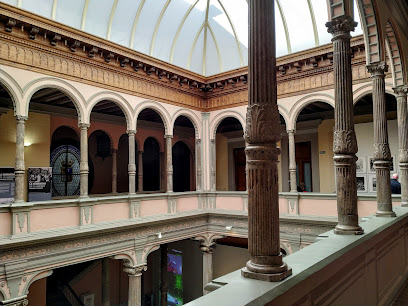
Fuente de la Hispanidad
Explore Zaragoza's Fuente de la Hispanidad, a stunning monument of cultural unity and a must-see attraction for every traveler.
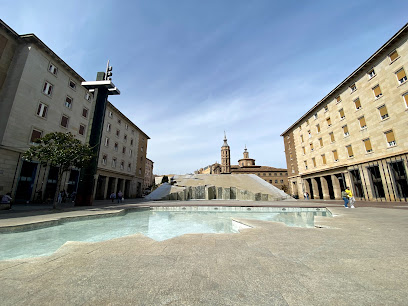
El alma del Ebro
Discover 'El alma del Ebro', a captivating sculpture in Zaragoza that beautifully embodies the essence of the Ebro River amidst stunning city views.
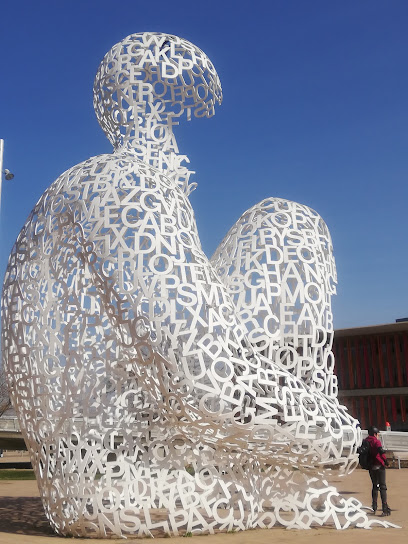
Arco del Deán
Discover the Arco del Deán: A breathtaking historical landmark in Zaragoza that blends Gothic and Mudéjar architectural styles.

Monumento a Agustina de Aragón
Explore the Monumento a Agustina de Aragón in Zaragoza, a striking historical landmark celebrating Spain's courageous heroine.
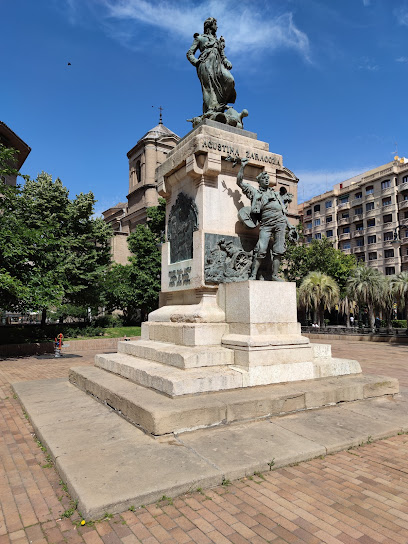
Palacio de los Condes de Morata o de Luna
Experience the rich history and stunning architecture of Zaragoza at the Palacio de los Condes de Morata, a must-visit historical landmark.
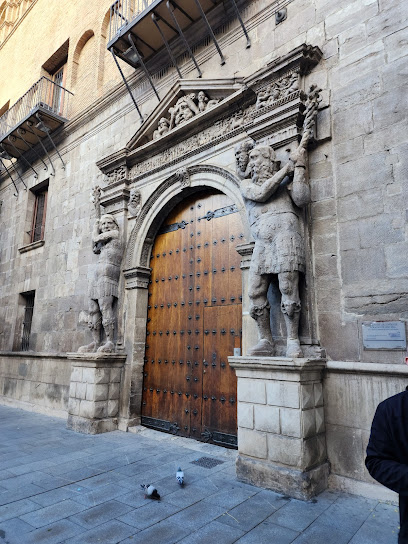
Monumento a Francisco de Goya
Explore Zaragoza's Monument to Francisco de Goya, a stunning tribute to the renowned painter, surrounded by rich history and vibrant culture.
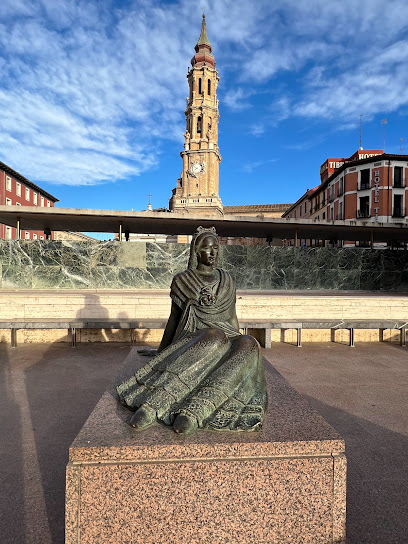
Leaning Tower of Zaragoza
Experience the architectural wonder of the Leaning Tower of Zaragoza, a historic landmark blending art and culture in the heart of the city.

Monumento a los Mártires de la Religión y de la Patria
Explore the Monumento a los Mártires de la Religión y de la Patria, a historical landmark in Zaragoza that honors bravery and faith amidst stunning architecture.
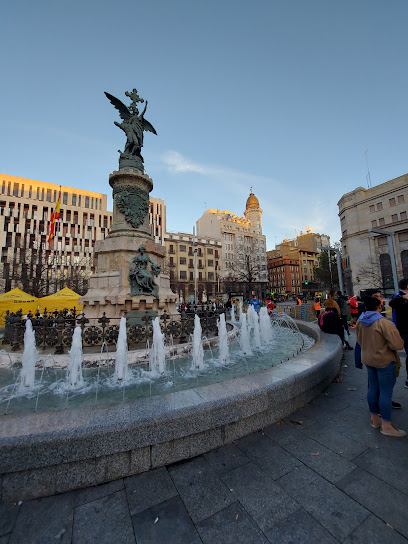
Unmissable attractions to see
Parque Grande José Antonio Labordeta
Discover the lush landscapes and cultural treasures of Parque Grande José Antonio Labordeta, Zaragoza's urban oasis perfect for relaxation and exploration.
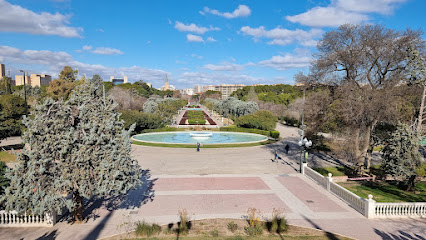
Murallas Romanas de Zaragoza
Discover the Murallas Romanas de Zaragoza, an ancient landmark that unveils the rich history and architectural marvels of this vibrant Spanish city.
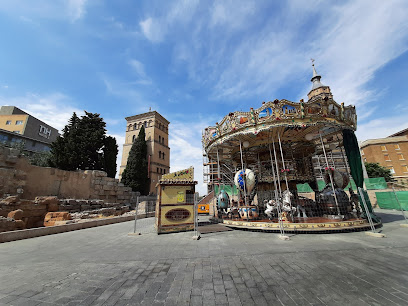
Pablo Gargallo Museum
Explore the Pablo Gargallo Museum in Zaragoza, a must-visit for art lovers featuring stunning sculptures and rich cultural history.
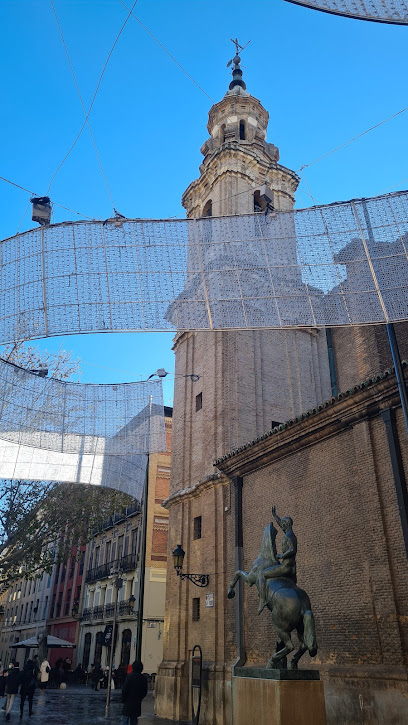
Essential places to dine
Casa Unai
Experience authentic Mediterranean flavors at Casa Unai in Zaragoza – where every dish tells a story.
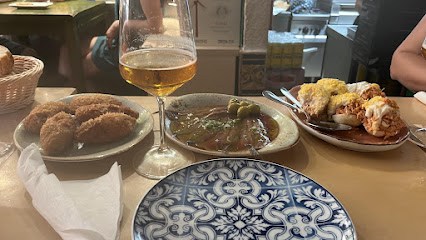
Casa Montañés
Discover authentic Spanish flavors at Casa Montañés in Zaragoza's charming Old Town - where tradition meets taste.
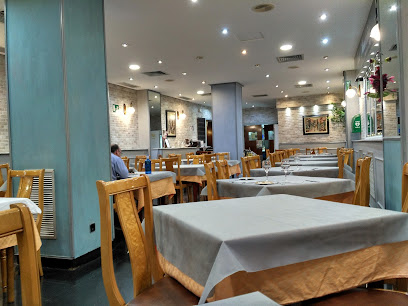
Los Xarmientos. Parrilla Aragonesa.
Experience the authentic taste of Aragon at Los Xarmientos – where tradition meets flavor in the heart of Zaragoza.
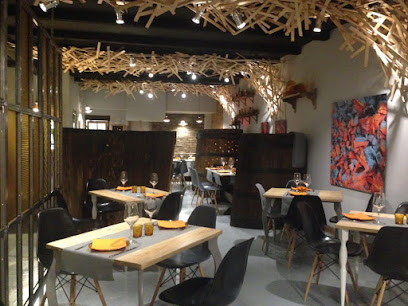
Restaurante Quema
Discover exquisite Mediterranean flavors at Restaurante Quema in Zaragoza's charming Old Town - a true taste of Spain awaits you!
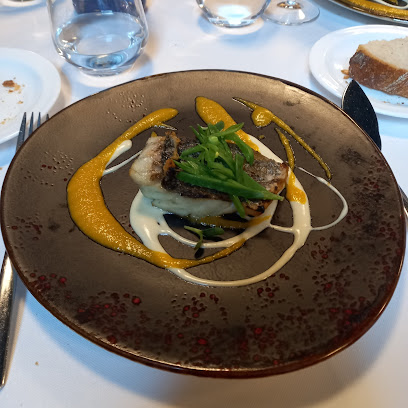
The Dinner GBN
Experience authentic Spanish cuisine at The Dinner GBN in Zaragoza's vibrant Old Town—where tradition meets flavor.
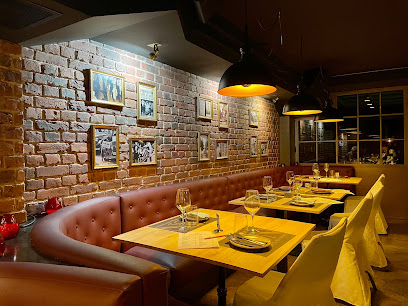
Restaurante Las Hadas
Discover delicious grilled meats and authentic tapas at Restaurante Las Hadas in Zaragoza's historic Old Town.
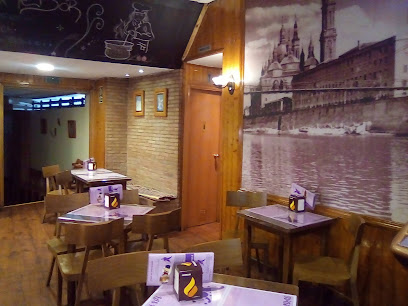
Se llama casa de comidas Ambrosio y Justino
Experience authentic Spanish cuisine at Casa de Comidas Ambrosio y Justino in Zaragoza's historic Old Town.
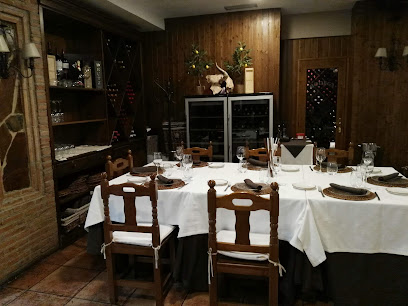
Idolan Restaurante
Discover authentic Moroccan cuisine in Zaragoza's historic Old Town at Idolan Restaurante - where every dish tells a story.

El Teatro
Discover authentic Spanish cuisine at El Teatro in Zaragoza's picturesque Old Town – where every meal is a celebration of local flavors.
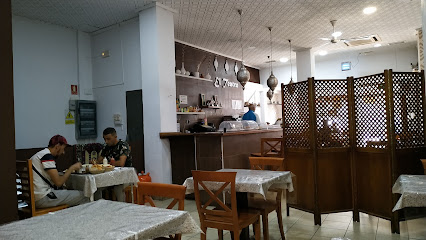
Bar Cosas del Gancho
Discover authentic grilled cuisine at Bar Cosas del Gancho in Zaragoza's historic Old Town – a culinary gem with vibrant flavors.
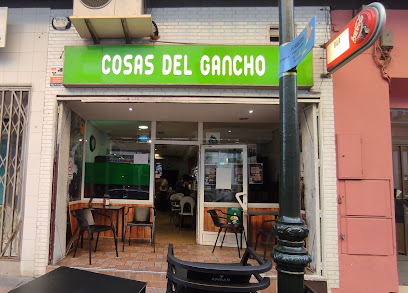
Markets, malls and hidden boutiques
ALE-HOP
Discover a world of unique gifts and trendy accessories at ALE-HOP in Zaragoza's Old Town, a must-visit for every traveler.
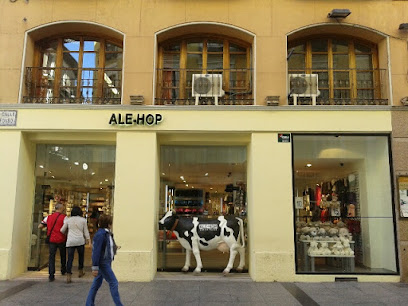
Natura
Explore Natura, a unique gift shop in Zaragoza's Old Town, offering locally crafted treasures and stylish clothing for every traveler.
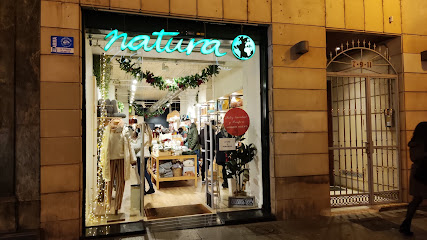
UnaOcaLoca tienda-taller
Explore UnaOcaLoca in Zaragoza's Old Town for a unique experience in needlework and vintage treasures that capture the essence of local artistry.
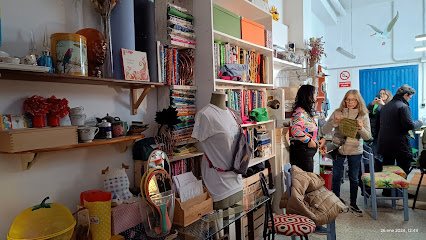
Jenar
Explore Jenar Gift Shop in Zaragoza's Old Town for unique gifts and souvenirs that capture the essence of Spanish craftsmanship.
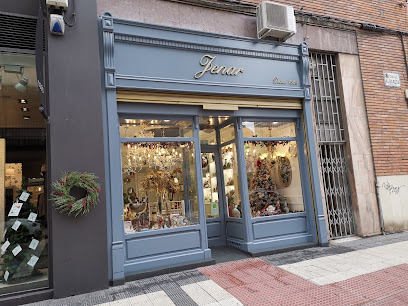
Zaragoza Olé Souvenirs
Explore Zaragoza Olé Souvenirs for unique gifts and local treasures that capture the spirit of Zaragoza's rich culture and vibrant heritage.
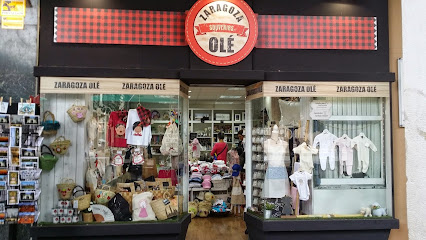
Träd Market Zgz
Explore Träd Market Zgz in Zaragoza's Old Town for unique gifts, local crafts, and a taste of the region's vibrant culture.
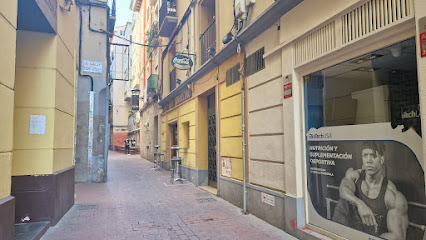
Mimbre
Explore Mimbre in Zaragoza for exclusive women's fashion that combines modern trends with timeless elegance, all set in a charming historic district.
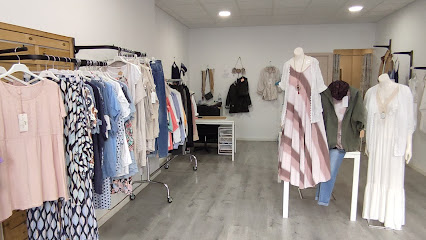
Déjate Atrapar Zaragoza
Explore unique fashion at Déjate Atrapar, a stylish clothing store in Zaragoza's Old Town, offering a perfect blend of contemporary and local designs.
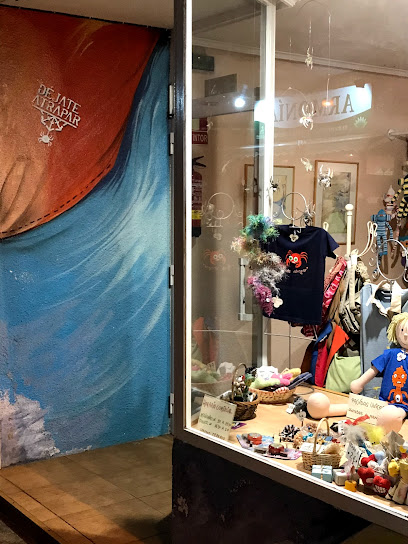
Meraki
Explore the whimsical world of Meraki in Zaragoza's Old Town, offering unique gifts and artisanal crafts that celebrate local creativity.
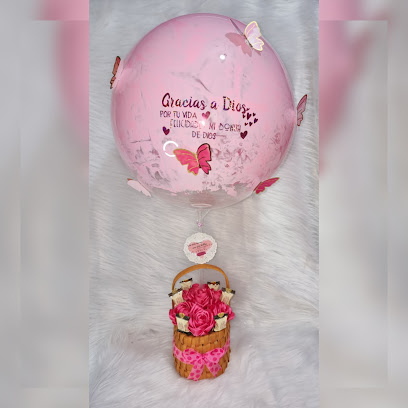
Sumerko Zaragoza Almozara
Explore the eclectic charm of Sumerko Zaragoza Almozara, the go-to variety store in the historic Old Town of Zaragoza for unique finds and local treasures.
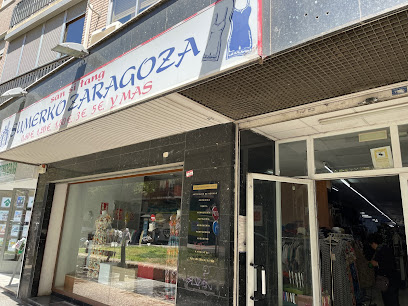
Essential bars & hidden hideouts
Gallagher Irish Tavern
Discover the charm of Gallagher Irish Tavern, a cozy Irish pub in Zaragoza offering delightful drinks, hearty meals, and a vibrant atmosphere for all.
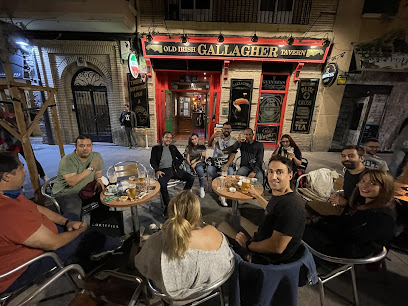
La Cucaracha - Zaragoza
Experience Zaragoza's vibrant nightlife at La Cucaracha, where expertly crafted cocktails and a lively atmosphere await.
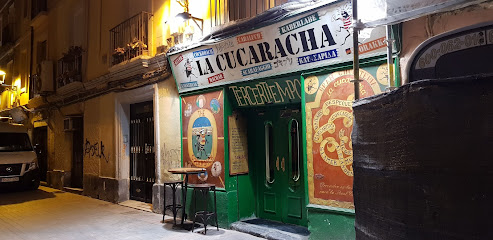
Sonora bar
Experience the vibrant nightlife and culinary delights at Sonora Bar, a must-visit destination in Zaragoza's historic Casco Antiguo.
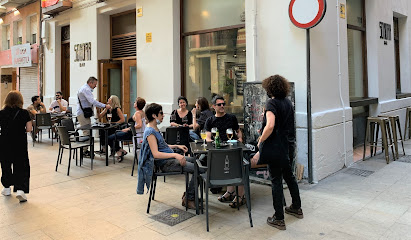
El Federal Cocktail Bar
Discover the lively El Federal Cocktail Bar in Zaragoza's Old Town, offering innovative cocktails and a vibrant nightlife experience.
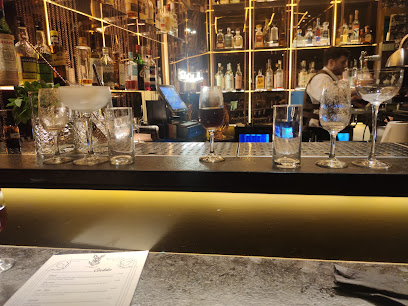
Borneo Zaragoza
Experience the vibrant nightlife of Zaragoza at Borneo Zaragoza, where eclectic drinks and a lively atmosphere await you in the heart of the Old Town.
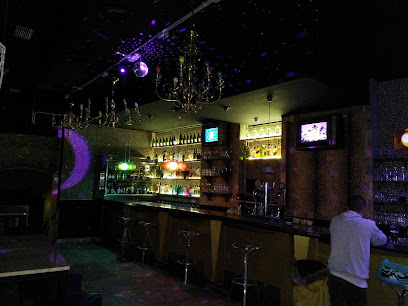
Bar Onaíram
Experience the vibrant atmosphere of Zaragoza at Bar Onaíram, where authentic tapas and local drinks come together in a charming setting.
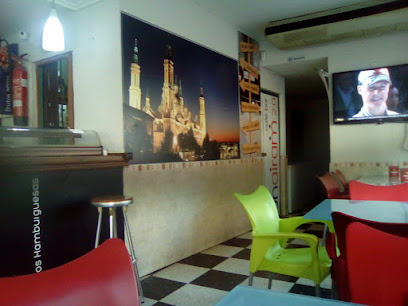
Bar Santo Domingo
Discover the charm of Bar Santo Domingo, a cozy bar in Zaragoza's Old Town, offering a delightful menu of craft beers and coffee in a warm atmosphere.
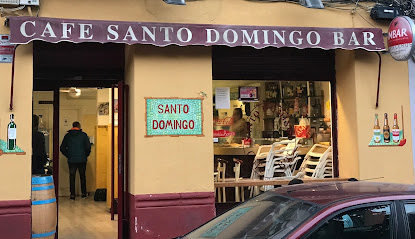
Bar Santa Lucía
Experience authentic Spanish tapas and a cozy atmosphere at Bar Santa Lucía in the historic heart of Zaragoza.
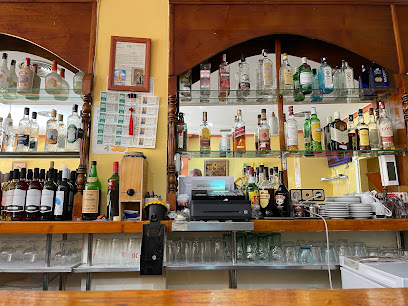
Bar Cosas del Gancho
Discover authentic grilled cuisine in the heart of Zaragoza's Old Town at Bar Cosas del Gancho, where flavor meets local culture.
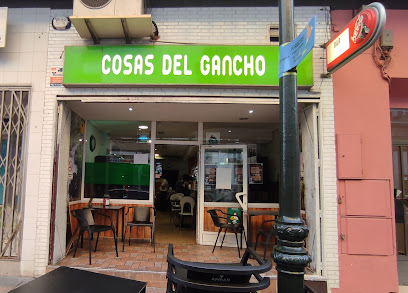
Bar López Bueno
Discover the vibrant atmosphere of Bar López Bueno, a stylish lounge in Zaragoza's historic Casco Antiguo, perfect for relaxing with drinks.
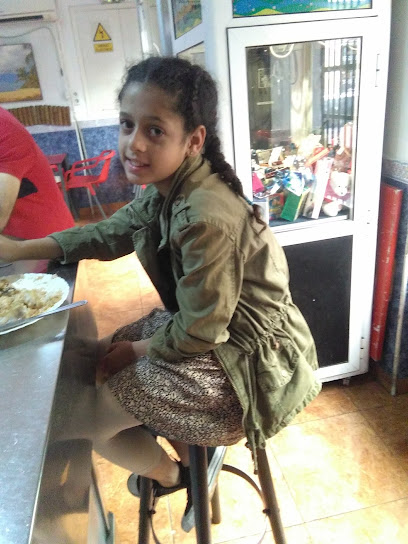
Local Phrases
-
- HelloHola
[oh-lah] - GoodbyeAdiós
[ah-dee-ohs] - YesSí
[see] - NoNo
[noh] - Please/You're welcomePor favor/De nada
[por fah-vor/deh nah-dah] - Thank youGracias
[grah-thyas] - Excuse me/SorryPerdón/Lo siento
[pehr-dohn/loh syen-toh] - How are you?¿Cómo estás?
[koh-moh ehs-tahs] - Fine. And you?Bien. ¿Y tú?
[byen. ee too] - Do you speak English?¿Hablas inglés?
[ah-blahs een-glehs] - I don't understandNo entiendo
[noh ehn-tyen-doh]
- HelloHola
-
- I'd like to see the menu, pleaseMe gustaría ver la carta, por favor
[meh goo-stah-ree-ah behr lah kahr-tah, por fah-vor] - I don't eat meatNo como carne
[noh koh-moh kahr-neh] - Cheers!¡Salud!
[sah-lood] - I would like to pay, pleaseMe gustaría pagar, por favor
[meh goo-stah-ree-ah pah-gahr, por fah-vor]
- I'd like to see the menu, pleaseMe gustaría ver la carta, por favor
-
- Help!¡Ayuda!
[ah-yoo-dah] - Go away!¡Vete!
[veh-teh] - Call the Police!¡Llama a la policía!
[yah-mah ah lah poh-lee-see-ah] - Call a doctor!¡Llama a un médico!
[yah-mah ah oon meh-dee-koh] - I'm lostEstoy perdido
[ehs-toy pehr-dee-doh] - I'm illEstoy enfermo
[ehs-toy ehn-fehr-moh]
- Help!¡Ayuda!
-
- I'd like to buy...Me gustaría comprar...
[meh goo-stah-ree-ah kohm-prahr] - I'm just lookingSolo estoy mirando
[soh-loh ehs-toy meer-ahn-doh] - How much is it?¿Cuánto cuesta?
[kwan-to kwehs-tah] - That's too expensiveEso es demasiado caro
[eh-soh ehs deh-mah-syah-doh kah-roh] - Can you lower the price?¿Puedes bajar el precio?
[pweh-dehs bah-hahr ehl pree-syoh]
- I'd like to buy...Me gustaría comprar...
-
- What time is it?¿Qué hora es?
[keh oh-rah ehs] - It's one o'clockEs la una
[ehs lah oo-nah] - Half past (10)Las diez y media
[lahs dyehs ee meh-dee-ah] - MorningMañana
[mah-nyah-nah] - AfternoonTarde
[tahr-deh] - EveningNoche
[noh-cheh] - YesterdayAyer
[ah-yehr] - TodayHoy
[oy] - TomorrowMañana
[mah-nyah-nah] - 1Uno
[oo-noh] - 2Dos
[dohs] - 3Tres
[trehs] - 4Cuatro
[kwah-troh] - 5Cinco
[theen-koh] - 6Seis
[seys] - 7Siete
[syeh-teh] - 8Ocho
[oh-choh] - 9Nueve
[nweh-veh] - 10Diez
[dyehs]
- What time is it?¿Qué hora es?
-
- Where's a/the...?¿Dónde está...?
[dohn-deh ehs-tah] - What's the address?¿Cuál es la dirección?
[kwal ehs lah dee-rehk-syohn] - Can you show me (on the map)?¿Puedes mostrarme (en el mapa)?
[pweh-dehs mohs-trar-meh (ehn ehl mah-pah)] - When's the next (bus)?¿Cuándo es el próximo (autobús)?
[kwan-doh ehs ehl proh-ksy-moh (ow-toh-boos)] - A ticket (to ....)Un billete (para ....)
[oon bee-yeh-teh (pah-rah)]
- Where's a/the...?¿Dónde está...?
History of El Gancho
-
El Gancho, a historic neighborhood in Zaragoza, has its roots in the early medieval period. Its name, which means 'the hook' in Spanish, reflects its unique topography and position as a crossroads for various communities. The area has historically been a melting pot of cultures, influenced by the presence of Christians, Muslims, and Jews, especially during the Reconquista, when Zaragoza was a significant center for trade and cultural exchange.
-
During the 19th century, El Gancho became a bustling commercial hub, thanks to its proximity to the city center and the Ebro River. The neighborhood thrived with the establishment of numerous shops, markets, and local businesses. This period saw a significant increase in population as people flocked to the area for economic opportunities, contributing to its diverse social fabric.
-
In the early 20th century, El Gancho emerged as an important cultural center within Zaragoza. The neighborhood was home to artists, writers, and intellectuals, who contributed to its vibrant cultural scene. The influence of the Spanish Civil War and subsequent political upheavals left an indelible mark on the neighborhood, leading to the establishment of various cultural initiatives aimed at preserving local heritage.
-
In recent years, El Gancho has undergone significant revitalization efforts aimed at preserving its unique historical character while promoting community engagement. The neighborhood has been the focus of urban development projects that celebrate its rich cultural heritage, including street art festivals, local markets, and cultural events that honor its diverse history. These initiatives have helped to attract both locals and tourists, breathing new life into the area.
-
El Gancho is characterized by its eclectic architecture, which reflects the various historical periods the neighborhood has undergone. Notable landmarks include the Church of San Pablo, which showcases Mudéjar architectural elements, and the vibrant street art that adorns many of its walls, telling the stories of the community. This blend of historical and contemporary aesthetics makes El Gancho a fascinating place for exploration and appreciation of Zaragoza's cultural heritage.
El Gancho Essentials
-
El Gancho is easily accessible from other neighborhoods in Zaragoza. You can take the Zaragoza tram (Line 1) to the 'Plaza de España' stop, and then walk approximately 15 minutes to reach El Gancho. Alternatively, local buses such as lines 30 and 32 connect El Gancho with various parts of the city, including the central bus station.
-
El Gancho is a compact neighborhood, making it easy to explore on foot. Public transport options include buses that run frequently throughout the area. For a more local experience, consider renting a bicycle from one of the city’s bike-sharing programs. The tram service is also a convenient option for reaching nearby areas.
-
El Gancho is generally safe for tourists, but like any urban area, it's advisable to stay cautious. Avoid poorly lit streets at night and be vigilant in crowded places, as pickpocketing can occur. Some areas around the outskirts may have higher crime rates, so it’s best to stick to well-trafficked routes.
-
In case of emergency, dial 112 for police, fire, or medical assistance in Spain. For non-emergencies, local police can be approached directly at their station. Pharmacies are widely available for minor health issues, and it’s advisable to have travel insurance that covers health emergencies.
-
Fashion: Do dress modestly, especially when visiting religious sites. Don't wear overly casual or revealing clothing. Religion: Do respect local customs, particularly in churches. Don't take photos in places where it is prohibited. Public Transport: Do give up your seat for the elderly. Don't eat or drink on public transport. Greetings: Do greet with a friendly 'Hola' and a handshake. Don't forget to make eye contact and smile when greeting. Eating & Drinking: Do try local tapas and enjoy meals at local bars. Don't rush through your dining experience; meals are often leisurely.
-
To experience El Gancho like a local, explore the vibrant market at the Plaza de Santo Domingo, where fresh produce and local specialties are abundant. Engage with local shopkeepers and try traditional dishes at the nearby eateries. Don't miss the street art that adorns the neighborhood, as it represents the local culture and history.
Trending Landmarks in El Gancho
-
Aljafería Palace
-
Parque Grande José Antonio Labordeta
-
Puerta del Carmen
-
Cathedral of the Savior of Zaragoza
-
Plaza San Felipe
-
Basílica of Santa Engracia Church
-
Palacio de Sástago
-
Fuente de la Hispanidad
-
El alma del Ebro
-
Arco del Deán
-
Monumento a Agustina de Aragón
-
Palacio de los Condes de Morata o de Luna
-
Monumento a Francisco de Goya
-
Leaning Tower of Zaragoza
-
Monumento a los Mártires de la Religión y de la Patria
Nearby Cities to El Gancho
-
Things To Do in Huesca
-
Things To Do in Lleida
-
Things To Do in Pamplona
-
Things To Do in Teruel
-
Things To Do in Lourdes
-
Things To Do in Tarragona
-
Things To Do in San Sebastián
-
Things To Do in Andorra la Vella
-
Things To Do in Arinsal
-
Things To Do in La Massana
-
Things To Do in Escaldes-Engordany
-
Things To Do in Ordino
-
Things To Do in Encamp
-
Things To Do in El Serrat
-
Things To Do in Canillo











